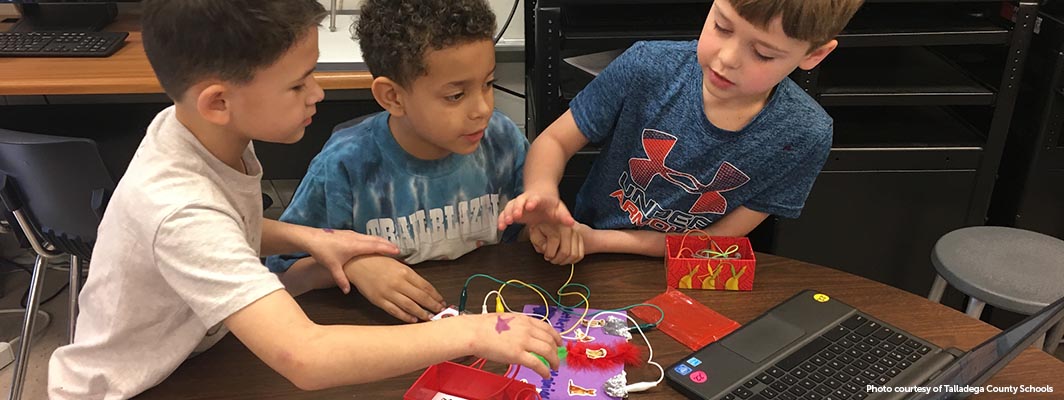
Talladega County Schools prepares students to use computing skills and knowledge in future career and college opportunities by offering pathways for computational thinking from kindergarten to 12th grade. Every day, students in our district engage with key computational thinking competencies such as algorithmic thinking, collecting and analyzing data, decomposing problems, and building models and simulations.
The work of our district was recently recognized by the Council on Competitiveness, a collaborative of representatives from industry, government, business, and education that meets about economic competitiveness. The Council on Competitiveness invited Dr. Suzanne Lacey, Superintendent of Talladega County Schools, and me to participate in the Forum for Advanced Computing to discuss the impact of supercomputing on the future economy.
The Forum made it clear that by providing pathways for computational thinking, students can be prepared with skills that industry has yet to fully adopt, but will likely be the norm when our students enter the workforce. At the Forum, we were part of a discussion about the push for industry to use simulations instead of physical testing and prototyping. Simulations will save companies millions of dollars and allow for more precision.
Through our district’s pathways for computational thinking, students work with simulations and building models across grade levels. For example, eighth-graders use PhET simulations on acids and bases to manipulate variables and discuss changes in an experiment that they may not otherwise be able to complete due to a lack of materials and time. High school math students use the PhET Balancing Simulator to find unit rates and the Graphing Quadratics Simulator to discover how changing coefficients changes the shape of a curve. Completing these virtual explorations in a game-based environment not only engages students but allows them to efficiently test and revise a hypothesis.
Students also have opportunities to create their own simulations using tools such as Code.org and Scratch Studio. For example, students created a simulation to model a coin-flipping experiment that would be unreasonable to do by hand. Students were tasked with writing code that uses while loops to repeatedly “flip coins” until certain conditions were met.
When we shared examples such as these, participants at the Forum were surprised and impressed to hear that students are deeply engaged with a skill that industry has yet to fully adopt. As district leaders, it is imperative that we provide opportunities for students to gain fluency in these competencies as soon as they begin their education.
One way that school districts can create pathways for computational thinking is by preparing teachers with professional learning opportunities. It is important that teachers know that STEAM and Computational Thinking activities can occur in any subject, not just math and science
These professional learning opportunities can empower teachers to create the pathways and identify opportunities to embed computational thinking into daily instruction. Teachers can collaborate to identify the key competencies students need in order to be successful at each grade level and deliberately create opportunities for students to engage in these problem-solving practices across all subject areas.
Other districts may also benefit from cross-sector collaborations, as we have with our engagement with the Council on Competitiveness. This kind of collaboration helps validate our efforts to prepare students with computational thinking competencies and helps us stay abreast of technological developments that will impact students’ futures.
In order to prepare students for a workplace that is constantly changing, we must equip them with key computational thinking strategies so that they can effectively evaluate problems and form innovative solutions.
Sign up for our newsletter to receive updates about our Computational Thinking initiatives.

We want to hear from you!
Please take this 5-minute survey and help us serve you better.
